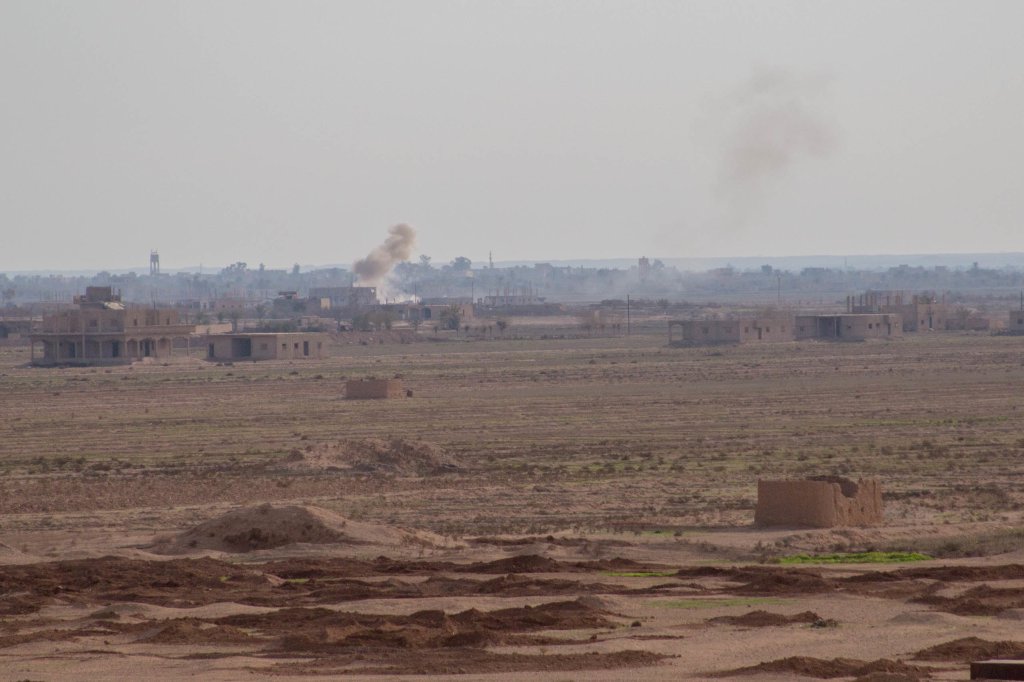A suicide drone struck a maintenance installation in Syria on the afternoon of March 23, 2023. The attack wounded five service members and an American contractor. Another American contractor was killed in the attack. All were stationed at a coalition facility in northeast Syria, where it was later discovered the air defense systems at the base weren’t fully operational.
In a statement released after the attack, the Pentagon released a statement saying the drone was Iranian. President Joe Biden ordered airstrikes against Iranian forces in eastern Syria in retaliation, forces linked to Iran’s Islamic Revolutionary Guard Corps (IRGC).
U.S. Air Force F-15E Strike Eagle fighters hit a warehouse containing ammunition, weapons, and other munitions, a command and control facility, and an intelligence collection site. The attacks killed eight pro-Iran fighters. These facilities were located in the Syrian city of Deir Ezzor, which killed six of the fighters. Another strike hit near the town of Bukamal, killing the other two.
“These precision strikes are intended to protect and defend U.S. personnel,” the Department of Defense said in a statement. “The United States took proportionate and deliberate action intended to limit the risk of escalation and minimize casualties.”
The next day, Iranian proxy militias launched a coordinated attack in retaliation for the American airstrikes, raising the stakes of tit-for-tat attacks.
Iran’s primary national security strategy is focused on keeping unrest and armed conflict outside of Iranian borders, ensuring the fighting that often takes place in the Middle East never finds its way to Tehran or other Iranian cities. To do this, it stokes tension and unrest in neighboring countries through the IRGC.
Iranian Revolutionary Guards operate outside of the conventional Iranian military forces, their main mission being to secure Iranian borders. Within the IRGC, a special foreign operations unit called the Quds Force is responsible for training and arming Shia militias operating outside of Iran. This is why the Quds Force has been labeled a terrorist organization by the U.S. and others.
The drone used in the attack on the American facility has been developed by Iran for increasingly capable and sophisticated uses on the battlefield. In recent years these suicide drones have been sold to Russia in increasing amounts for use in its invasion of Ukraine. The use of the drones on Syrian battlefields is a relatively new threat to the American forces there.

U.S. service members deployed to Syria in 2014 to support Syrian rebels against the regime of Bashar al-Asad and support Kurdish militias in destroying the Islamic State and other armed fundamentalist terror organizations. The war quickly devolved into a series of proxy battles and wars between U.S.-backed forces and those on the side of Iran and the Syrian government.
The long-term mission of the American intervention in the civil war has since evolved and given time for anti-American forces to adapt their tactics to better strike American and allied targets in the region. The March 2023 drone strike is just the latest of the increasingly sophisticated attacks on U.S. assets.
Two U.S. service members were treated for their wounds on site in Syria, while the other three had to be medevaced to facilities inside neighboring Iraq. The Pentagon has not released the name of the contractor killed because the family has yet to be notified. The United States currently has around 900 personnel inside Syria, still fighting the Islamic State. DoD officials say that there is no plan to end the American presence in the country anytime soon.

